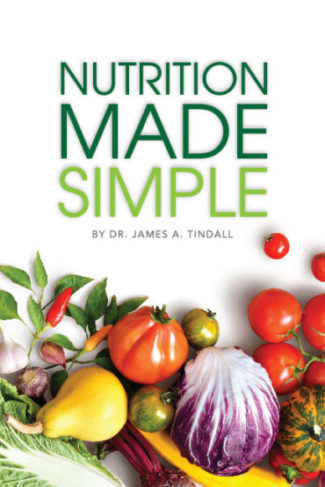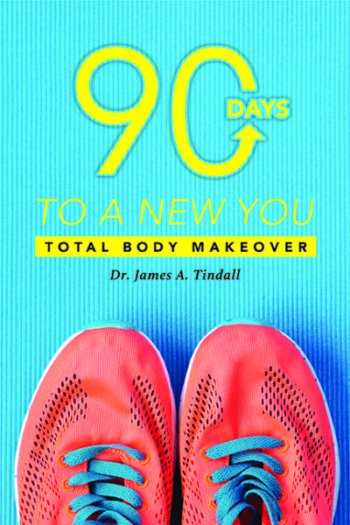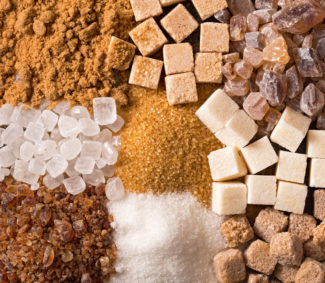We have said this before and Dr. Tindall says it in his fitness books; “sugar is the enemy of weight loss.” So, if you want to lose weight, cut back on your sugar. Read Dr. Tindall’s books to understand the science of why reducing sugar causes weight loss and weight gain, below we’ll focus on ways to help you reduce your sugar intake.
Gradually cut back on foods that contain added sugar
It seems sometimes that it’s impossible to find foods and snacks without a lot of added sugar. Many foods and beverages contain sugar, usually added during processing. As a general rule of thumb, if you want to avoid weight gain, do not consume in excess of 35 grams of sugar at one time and, that’s not very much. It’s okay if you’re having a treat for all your hard work, but not 2-3 times per day. Thus, you want to reduce the amount of sugar you consume and the frequency of its consumption. Over time, aim to reach the recommended limit on added sugar. Let’s look at some ways to help you out.
Advertisement: Amazon (click on photo for more info)

Eat whole fruit instead of fruit juice
Start eating whole fruit instead of fruit juice. Why? Because drinking juice will give you lots of sugar – too much at one time. This is illustrated by the fact it requires 4-5 medium oranges to make an 8-ounce glass of orange juice. One cup of raw orange juice has 112 calories, 21 grams of sugar and 2 grams of protein. It provides 124 milligrams of vitamin C, 496 IU of vitamin A, 74.4 micrograms of folate and 15.4 milligrams of choline. A major benefit of a whole fruit versus juice is the fiber content. Therefore, consider –
• Eating an orange instead of orange juice
• Eating an apple instead of apple juice
• Eating a banana or any other whole fruit instead of fruit juice
• Squeezing juice from a lemon into water instead of drinking lemonade
Generally, this will save 9-16 grams of sugar for each substitution
Apple juice vs. a fresh apple
• Apple juice = 27 g sugar per 8 ounces (average)
• Medium apple = 18 g sugar
Orange juice vs. a fresh orange
• Orange juice = 21 g per 8 ounces sugar
• Medium orange = 12 g sugar
Lemonade vs. fresh squeezed lemon juice
• Lemonade = 24 grams sugar per 8 ounces
• 1 fresh squeezed lemon = 1.6 grams of sugar
Almost all fruit juice contains added sugar; organic juices can be an exception. Additionally, whole fruit contains only naturally occurring sugar, not added sugar. Whole fruit also contains great fiber and nutrients from the fruit skin and pulp, which is generally lacking in fruit juice.
So, what are you waiting for; wean yourself off of fruit juice!
Here are a few ideas to start weening off juice:
• Limit your juice to a 4-ounce glass only, no larger portions
• Dilute your juice with water or sparking water
• Purchase ‘light’ or ‘lite’ juice that is already diluted; in these juices, the first and primary ingredient is usually water.
Limit sodas and energy drinks; this is things like Coke, Pepsi, etc. There’s just too much sugar in them.
Stop drinking soda and energy drinks. Most of the added sugar Americans consume comes from soda and other sugary beverages including energy drinks and fruit juice. Next is sugar from candy, cakes, ice cream, Frappuccino’s, and similar foods.
• A 12-ounce can of regular soda contains 39-45 grams (10-11 teaspoons) of sugar!
• A 16-ounce energy drink can contain 62 grams (16 teaspoons) of sugar!
Either one of these drinks is about double the amount of sugar in the recommended dietary allowance (6-9 teaspoons) of added sugar.
Eat plain cereal and add fresh fruit
Are you one of those people who as a kid, grew up eating Frosted Flakes, Fruit Loops, and Cocoa Puffs? Well, you need to eat cereals with less sugar to be healthier. Choose plain cereal instead of sugary cereal then, add fruit for your sweet cravings. As an example:
• Buy plain oatmeal instead of flavored oatmeal. Then add fresh fruit in a moderate amount; choose a fruit you enjoy.
• Buy regular Cheerios instead of Honey Nut Cheerios and banana slices or other fruit.
Making this simple change will cut your sugar by about eight grams per serving. As an example:
• 3/4 cup of plain Cheerios has 1 gram of sugar
• 3/4 cup of Honey Nut Cheerios has 9 grams of sugar.
As a kid, sugary cereals taste like heaven, but as an adult, past the age of 35, your slowing metabolism will make you pay for these with unnecessary weight gain.
How to start weaning off sugary drinks and foods
Face it, most of us really enjoy sweets. So, like smoking, don’t go cold turkey or you will not be able to wean yourself off high sugar. Instead, cut back slowly. For example, it you’re really addicted to soda, start by getting a fountain drink instead of bottled or can; fill the cup at least half way with ice and then, do about 1/3 regular sweetened soda and 2/3 diet or, if that is too low, start by adding ½ of each. For foods such as serial, begin by combining your sugary cereal with plain cereal. For example, combine 1/2 cup of Honey Nut Cheerios with 1/2 cup plain cheerios. Work at it until you achieve your goal. Switching all at once is like a bad diet, it will not change your eating habits. And, that’s precisely what you need to do.
Follow a basic 3-Part Ingredient Rule
Read the ingredients in the food you’re buying. If sugar is among the top 3 ingredients listed, purchase something else. Also, be aware that foods that say low sugar are generally high fat and those that say low fat are generally high in sugar. A few times at the grocery store and you’ll get the hang of it.
Advertisement: Amazon (click on photo for more info)
 As and FYI, ingredients on a food label are listed in order of greatest amount to least amount. But, there are also times that while sugar may not be listed among the top 3 ingredients, that you need to watch out for code names for sugar such as corn syrup/sweetener, maltose, dextrose, cane juice, dextrose, etc.
As and FYI, ingredients on a food label are listed in order of greatest amount to least amount. But, there are also times that while sugar may not be listed among the top 3 ingredients, that you need to watch out for code names for sugar such as corn syrup/sweetener, maltose, dextrose, cane juice, dextrose, etc.
For those who drink lots of coffee, you may wish to consider modifying the types you consume. For example, buy a macchiato instead of a Frappuccino. The idea is to consume less sugary coffee-type beverages. Also, consider:
• Adding cinnamon to your coffee instead of sugar
• Ordering coffee without sweetener or with ½ the normal amount
• Ordering an espresso drink with ½ the syrup.
• Downsizing your espresso drink; order a 12 oz. instead of a larger cup or,
• Ordering a mocha with ½ the chocolate.
And now, we come to those who love their wine and happy hour drinks. These are real problems because they are sugar alcohols, which have 9 grams of carbs compared to a regular carb that has 4. Also, the alcohol is used as an immediate energy source by the body so that excess energy/calories gets stored as fat rather quickly. So, be a little pickier about your happy hour cocktails.
Follow these tips: Skip or limit drinks with soda or juice mixers. Instead, use club soda as a mixer or drink alcohol on the rocks.
• Limit your drinks to distilled spirits on the rocks; these include gin, vodka, tequila, whiskey, and rum.
• Muddle fresh ingredients for flavor instead of adding sugary mixers such as cucumber, mint, basil, or fresh fruit.
• Order tequila on the rocks with fresh lime juice instead of a margarita.
• Use sparking seltzer water or club soda as a mixer in drinks (both are free of calories and sugar).
As before, you may not wish to go cold turkey as it were, all at once. This is because you are a creature of habit and likely, drastic reduction will likely change the taste so much at once that you no longer enjoy the drink. The purpose is to reduce the sugar, but still enjoy the drink. Thus, you will also want to begin skipping or limiting liqueurs such as Bailey’s Irish Cream, etc., which are part of many popular mixed drinks: margaritas, daiquiris, pina coladas, long island ice teas, etc.
Finally, limit candy, cakes, cookies, and similar desserts
These types of desserts account for 25% of the added sugar Americans consume. During the depression era, sugar consumption was about 25 pounds per person per year. Today that amount is about 200 pounds. With this drastic increase in sugar intake, we have also witness significant increases in juvenile and adult on-set diabetes, which has been correlated in a great many instances to high-sugar diets.
Tips to limit candy and desserts:
• Eat dessert less frequently. Try 1-2 times per week, not 5-7
• Eat half the dessert you would normally eat
• Share a dessert at a restaurant between two people
• Eat less candy and sweets during the holidays
• Opt for fresh fruits instead of candy
Do you like to cook? Then, reduce sugar in recipes. For example, reduce the amount of sugar the recipe calls for by 1/4 to 1/2. You can always add a sugar substitute in lieu of pure sugar. This will be featured in a future article.
Instead of drinking sugar and sports drinks, try cold water more frequently, it’s actually more refreshing and by adding some lemon juice and small amounts of fruit juice, it is really good for you.
These are just a few of the ways to reduce your sugar intake. There are many others you can decide on your own. Just have fun and enjoy great food and drink without so much sugar. You’ll be glad you did.







